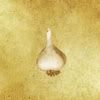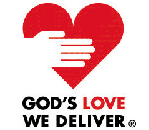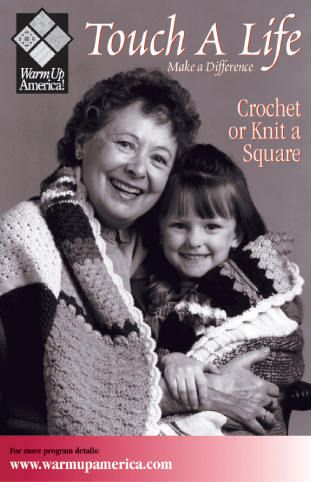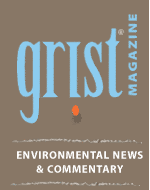Mumbai - Day 1
Part II : Print Factory - Screening In All its Glory
It never ceases to amaze me just how awesome my factories are. Over the years some have been weeded out that didn't suit my needs leaving a stellar team.
This factory is no exception.
First a design is generated onto a piece of screen (left) in a darkroom of sorts. This is tedious and meticulous work. One slip of the hand in placing the repeat and it's ruined requiring a do-over!
Next the screen is power washed and the design appears before your eyes (below right). 
A screen is made for each separate color used in the print. 8 colors, 8 screens. If the print is a big job (many yards/meters to be printed) then 4, 6, 8+ sets are made. A single tear in these delicate screens and they need replacement.
This type of screen is used in both the hand screening process (like those t-shirts you silk screened in high school) as well as for the powerful automated printing machine. The only difference is that the automatic machine has quantity of color limitation while you could go on and on printing by hand.
HAND PRINTING:
 were it is carefully lined up and then set into place. There are cut outs along the edges of the table to help the hand screen printers line up the screen. Some of the prints are extremely delicate and setting them simply by hand would be both blinding and nearly impossible. After each tables worth is finished it is left to dry and they move on to the next table. (There are many tables lined up - more than shown in this photo.) The next layer of color CAN NOT be added until the prior layer is dry - otherwise you get smudges and smears. Depending upon how many colors are to be used, this can take quite a number of days. Once the last of the layers is applied, the
were it is carefully lined up and then set into place. There are cut outs along the edges of the table to help the hand screen printers line up the screen. Some of the prints are extremely delicate and setting them simply by hand would be both blinding and nearly impossible. After each tables worth is finished it is left to dry and they move on to the next table. (There are many tables lined up - more than shown in this photo.) The next layer of color CAN NOT be added until the prior layer is dry - otherwise you get smudges and smears. Depending upon how many colors are to be used, this can take quite a number of days. Once the last of the layers is applied, the  fabric is lifted and hung above the table until dry, thus freeing up the table for the wax to be scraped (see left) and sent to be cleaned and reboiled and the entire printing process is started again. That doesn't mean the scarves are finished by any means...more on that later in the section "WASHING, TREATING, DRYING and SHAPING" below.
fabric is lifted and hung above the table until dry, thus freeing up the table for the wax to be scraped (see left) and sent to be cleaned and reboiled and the entire printing process is started again. That doesn't mean the scarves are finished by any means...more on that later in the section "WASHING, TREATING, DRYING and SHAPING" below.
The same process is used when hand printing on knit fabric, however, the set up is a bit longer. Once the yarn has been dyed, spooled and knit into fabric, the fabrics edges are rolled in (as you know if you have knit anything in stockinette stitch without changing up the stitch at the edges). How do they roll it out then? Like this:
Each edge is unrolled carefully and pressed into the wax covered table. It gets measured and eyed as they go. What a job they have to accomplish! And you thought blocking that sweater was rough! Phew!
MACHINE PRINTING:
Machine printing follows the same theory as the hand printing methods above. It involves using multiple screens and colors run through a hand operated machine.
It's certainly not fully automated by any means. It simply allows for more screens to be pressed/painted across at a time while the machine precisely rolls the fabric ahead in a strategic fashion.
It's a monster of a machine taking upwards of 8 men to run it at a time. In this photo, they are just resetting this machine and screens to run a new print. WASHING, SOFTENING, DRYING and SHAPING:
WASHING, SOFTENING, DRYING and SHAPING:
After the prints are finished, the fabric is a bit stiff and needs a little TLC to give it the softness that we all desire in our clothing and accessories. How does this work? Well it depends of course on the fabric type. In this series of photos the fabric is a polyester-cotton blend what was printed with a one color zebra print of black on white.
How does this work? Well it depends of course on the fabric type. In this series of photos the fabric is a polyester-cotton blend what was printed with a one color zebra print of black on white.
To the left it is being fed, flat, into a huge and sprawling machine. As you look below, right, you 
I love this photo, Dan took it (as well as some of the others). Great shot. This fellow is simply gently pulling the fabric from the giant machine into the spinning bin. Once spun it will be put into the giant dryer and dried. With the hundreds of photos taken of this factory between Dan and I, I'm shocked that I don't 
If the fabric is a crinkle fabric or a fabric that must be washed by more delicately, it goes through this machine (below left) which is 
-+blocking+fabric+machine+edit.jpg) I'm still listening carefully to every word. Have I told you how much I like learning about how factories work?
I'm still listening carefully to every word. Have I told you how much I like learning about how factories work? From here the fabric is moved to the shaping/ blocking machine (shown both right - the start, and left - the end). The machine is set for the width of the fabric and it is fed in, smoothed out, ironed and spooled onto a roll. If it isn't set to the proper width, the fabric can be over stretched causing the print to become distorted or the crinkle to be stretched out of shape ruining the crinkle. That is steam in the background from the dryers and spinners. It's not a super hot day but the air is thick from the weight of the water in it. I'd think on a hot day it would be some steam bath in here.
From here the fabric is moved to the shaping/ blocking machine (shown both right - the start, and left - the end). The machine is set for the width of the fabric and it is fed in, smoothed out, ironed and spooled onto a roll. If it isn't set to the proper width, the fabric can be over stretched causing the print to become distorted or the crinkle to be stretched out of shape ruining the crinkle. That is steam in the background from the dryers and spinners. It's not a super hot day but the air is thick from the weight of the water in it. I'd think on a hot day it would be some steam bath in here.
From here the fabric is trucked up the road to another factory where it is made into the product.
Labels: Factory, India, Printing, Silk Screening, Work

























0 Comments:
Post a Comment
<< Home